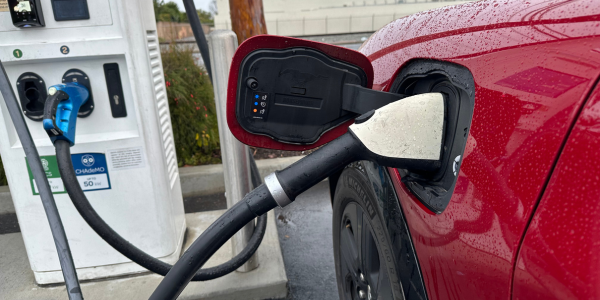The transportation industry is undergoing a major shift towards a cleaner, more sustainable future. Electric vehicles are becoming more popular, and companies are exploring alternative fuel sources to cut down on greenhouse gas emissions. As the way we travel changes, so must the infrastructure that supports it. One crucial element of this infrastructure is gas stations. Gas stations can transform into mobility hubs by adapting to the changing landscape of transportation. By offering a diverse range of services, gas stations can diversify revenue streams, appeal to a broader range of customers, and position themselves as innovative and forward-thinking businesses. In this blog post, we will explore how gas stations can become mobility hubs and why this transformation is important for the future of transportation.
Offering EV Charging Infrastructure and Alternative Fuels: One of the most obvious ways that gas stations can evolve into mobility hubs is by offering charging infrastructure for electric vehicles (EVs). This would involve installing electric vehicle chargers in their parking lots and providing charging services to customers. Gas stations can also offer alternative fuels, such as hydrogen or biodiesel, as an alternative to traditional gasoline. By diversifying their fuel offerings, gas stations can appeal to a broader range of customers and ensure that they remain relevant in a changing market.
Battery Swapping Services: Battery swapping is a convenient solution for EV drivers who do not want to wait around for their car to charge. In a battery swapping service, drivers simply swap out their depleted battery for a fully charged one. Gas stations can offer this service to attract EV drivers and make their stations more appealing.
Bike-Sharing and Electric Scooter-Sharing: As more people turn to alternative modes of transportation, gas stations can meet this demand by offering bike-sharing and electric scooter-sharing services. This would involve providing bikes or scooters for rent, as well as the infrastructure to recharge them. This service would be especially attractive to customers who need a quick and convenient way to get around town.
Public Transportation Connections: Gas stations can also become transportation hubs by offering connections to public transportation. This could include buses, trains, or subways. By offering this service, gas stations can provide a convenient and accessible way for customers to get around town.
Parcel Pickup and Drop-Off Points: Finally, gas stations can offer parcel pickup and drop-off points. This service would be particularly useful for customers who need to send or receive packages but do not have a convenient location to do so. By offering this service, gas stations can attract a wide range of customers and diversify their revenue streams.
Gas stations have traditionally been one-stop-shops for fuel, snacks, and other convenience items. However, as the transportation industry evolves, gas stations must adapt to meet changing customer demands. By becoming mobility hubs, gas stations can offer a wide range of services that cater to the needs of modern customers. This includes EV charging infrastructure, alternative fuels, bike-sharing and electric scooter-sharing options, public transportation connections, parcel pickup and drop-off points, and more. By diversifying their revenue streams, gas stations can remain relevant in a changing market and position themselves as forward-thinking businesses. Embracing clean and sustainable mobility options is not only good for the environment but also for business. So, embrace the future and join the ranks of gas stations transforming into mobility hubs!
